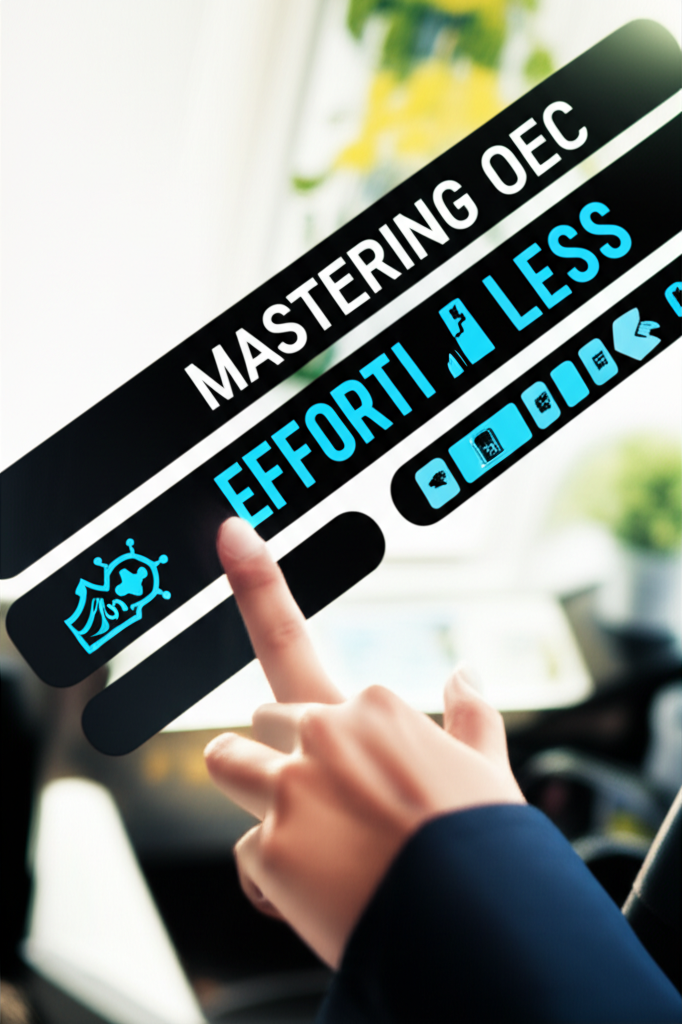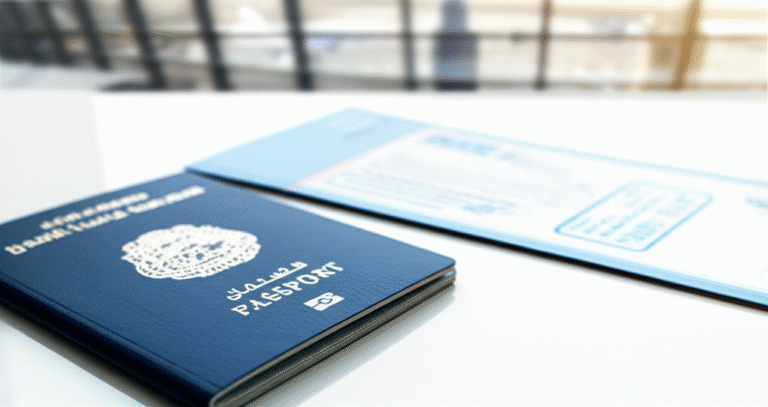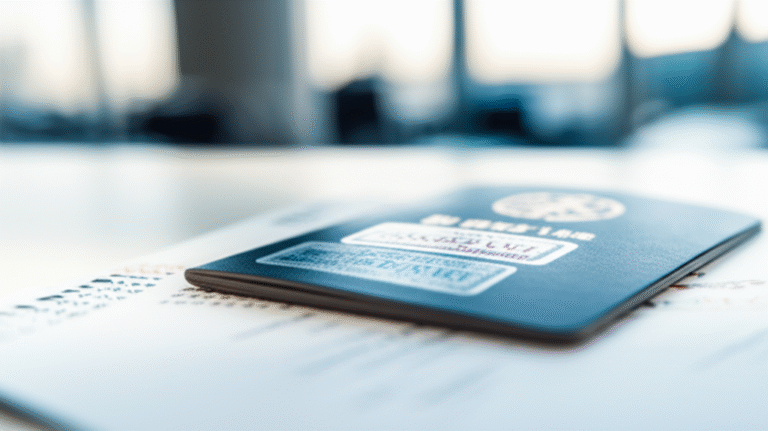Mastering oec: Your Effortless Guide

Quick Summary:
Mastering OEC is straightforward! This guide breaks down how to get your OEC seamlessly, making international employment a breeze. We’ll cover everything you need, from understanding what an OEC is to the simple steps for obtaining yours, ensuring a smooth journey for every traveler.
Hello there! Amira Collins here from uaestayinn, your friendly guide to making life’s adventures a little bit easier. Today, we’re diving into something that might sound a bit technical but is actually a crucial step for many of you planning to work abroad: the OEC. You might have heard of it, or perhaps you’re just starting to explore your options for international employment. Wherever you are in your journey, I want to reassure you that understanding and obtaining your Overseas Employment Certificate (OEC) is totally manageable. Think of it as a passport stamp for your work abroad, ensuring everything is above board and safe. We’ll walk through it together, step by step, making sure you feel confident and prepared every step of the way. So, let’s get started on mastering your OEC!
In This Article
- 1 What Exactly is an OEC and Why Do You Need It?
- 2 Who Needs an OEC?
- 3 Understanding the Types of OEC and When You Need Them
- 4 The Step-by-Step Guide: How to Get Your OEC
- 5 OEC Online vs. In-Person: Which is Better?
- 6 Tips for a Smooth OEC Application Process
- 7 Frequently Asked Questions About OEC
- 7.1 Q1: How much does an OEC cost?
- 7.2 Q2: What if I lose my OEC? Can I get a replacement?
- 7.3 Q3: I’m going on vacation back to the Philippines. Do I need to get an OEC to go back to work?
- 7.4 Q4: Can my recruitment agency handle my OEC application for me?
- 7.5 Q5: What happens if I don’t have an OEC when I travel back to my host country?
- 7.6 Q6: Are there any OEC exemptions for specific countries?
- 8 Conclusion: Your Journey Ahead
What Exactly is an OEC and Why Do You Need It?

So, what is this magical OEC we’re talking about? The Overseas Employment Certificate (OEC), formerly known as the Exit Clearance and Re-entry Permit (ECP), is essentially a document issued by the Philippine Overseas Employment Administration (POEA), now part of the Department of Migrant Workers (DMW), to Overseas Filipino Workers (OFWs). It serves as proof that you are a documented OFW and are returning to a legitimate job abroad. Think of it as your golden ticket that allows you to travel visa-free to certain countries and, more importantly, to avail of certain benefits and protection policies for OFWs. It’s a vital document that ensures your employment is recognized and regulated, offering you security and peace of mind as you work overseas.
Why is it so important? The OEC is your proof of legal employment status abroad. It allows you to bypass certain immigration requirements when returning to your host country, especially if you’re on an existing work visa. More significantly, it ensures that you and your employer have met the requirements set by the Philippine government for overseas employment. This means your rights as a worker are protected, and you have access to programs and support systems designed specifically for OFWs. Without an OEC, you might face difficulties entering certain countries or returning to your job, and you might miss out on valuable benefits. So, getting your OEC is not just a bureaucratic step; it’s a crucial safeguard for your well-being and your career abroad.
Who Needs an OEC?

This is a common question, and it’s important to clarify who is generally required to get an OEC. In most cases, the OEC is required for Filipino citizens who are:
- Returning OFWs: If you have worked abroad before and are returning to the same employer or a new employer in the same country.
- First-time OFWs: If you are heading abroad for the first time to work.
- OFWs on Vacation/Holiday: If you are an OFW on vacation in the Philippines and need to return to your job abroad.
There are, however, certain exemptions. For instance, OFWs who are returning to countries covered by the Balik-Manggagawa (BM) program who will be resuming their employment with the same employer and have a valid existing employment contract and work visa may be exempt from personally appearing at the POEA/DMW office if they can secure their OEC online. Additionally, those who have already acquired permanent residency or citizenship in their host country might also have different requirements. It’s always best to check the latest DMW guidelines or consult with the nearest Philippine Overseas Labor Office (POLO) in your host country or the DMW office in the Philippines for the most accurate and up-to-date information specific to your situation. For the purpose of this guide, we’ll focus on the general process for obtaining an OEC, which is essential for many.
Understanding the Types of OEC and When You Need Them

Navigating the OEC process can seem a bit complex because there are different scenarios, leading to different types of OEC applications. Understanding these distinctions will help you identify exactly what you need. The most common scenarios are:
1. Balik-Manggagawa (BM) OEC
This is for OFWs who are returning to their employer abroad after a vacation or visit to the Philippines. It’s designed to be a simpler process for those who are essentially returning to their existing employment. The key criteria for a BM OEC are:
- You are returning to the same employer.
- You have a valid employment contract.
- Your passport is still valid.
- You have a valid visa or work permit for your host country.
The Balik-Manggagawa program often allows for online processing, which can save a lot of time and effort. This is the most common type of OEC for many returning OFWs.
2. Non-Balik-Manggagawa (Non-BM) OEC
This type of OEC is for OFWs who are not covered by the Balik-Manggagawa program. This typically includes:
- First-time OFWs.
- OFWs returning to a new employer.
- OFWs whose employment contracts have expired and are renewing with the same employer but require a new contract.
- OFWs who were previously not documented or have a different employment status.
The Non-BM OEC process is generally more involved, usually requiring a personal appearance at a DMW office or POLO, and might involve more documentation.
Knowing which category you fall into is the first crucial step in preparing for your OEC application. It dictates the documentation you’ll need and the process you’ll follow.
The Step-by-Step Guide: How to Get Your OEC

Now, let’s get to the heart of it – how to actually secure your OEC. The process has become more streamlined with online options, but it’s still important to be prepared. We’ll cover the general steps, focusing on the most common scenarios. Remember, the Department of Migrant Workers (DMW) is the primary agency, and they often update their procedures, so always refer to their official website for the latest details.
Step 1: Determine if You Need an OEC and Which Type
As discussed, the first thing you must do is confirm if you require an OEC and if you fall under the Balik-Manggagawa or Non-Balik-Manggagawa category. Check the DMW website or consult with a POLO if you’re unsure. This will save you a lot of time and prevent you from gathering the wrong documents.
Step 2: Prepare Your Required Documents
This is where thorough preparation is key! Having all your documents ready will make the process significantly smoother. The exact requirements can vary slightly depending on your destination country and employment status, but here’s a general list of what you’ll typically need:
For Balik-Manggagawa (BM) OEC (Online Application):
- Valid Passport (with at least six months validity)
- Valid Philippine Visa or Work Permit for your host country
- Proof of confirmed flight booking for your return to your host country
- For direct hires and returning workers with no existing contract: Your new or renewed employment contract (if applicable)
- For OFWs who are direct hires or those who underwent processing through a recruitment agency: Your employment contract.
For Non-Balik-Manggagawa (Non-BM) OEC (Manual Application):
In addition to the above (where applicable), you might need:
- Valid Employment Contract authenticated by the Philippine Overseas Labor Office (POLO) in your host country.
- Visa/Work Permit for your host country.
- Passport.
- Confirmatory letter from employer (if applicable).
- Other documentary requirements as specified by the DMW.
Important Note: Always check the official DMW website or your nearest POLO for the most current and comprehensive list of required documents. They may have country-specific requirements or changes in policy.
Step 3: Online Application (for Balik-Manggagawa)
If you qualify for the Balik-Manggagawa online processing, this is where you’ll start. Visit the official DMW website (www.dmw.gov.ph) and look for the OEC online application portal, often under the “Online Services” or “e-Services” section.
- Create an Account: You might need to create a DMW online account if you don’t have one already.
- Fill Out the Application Form: Carefully complete the online application form with your personal details, passport information, employment details, and flight details.
- Upload Documents: You’ll likely need to upload scanned copies of your required documents. Ensure they are clear and legible.
- Schedule an Appointment (if required): Sometimes, even with online applications, you might need to book an appointment for verification or payment.
- Pay the OEC Fee: There is usually a processing fee for the OEC. Payment can often be done online or through accredited payment centers.
Tip: Start this process at least a week or two (or more, depending on your travel schedule) before your flight to allow for any potential issues or delays.
Step 4: Personal Appearance (for Non-Balik-Manggagawa and sometimes for BM)
For Non-BM applicants, or if the online system requires it for BM applicants, you will need to personally visit a DMW office in the Philippines or a POLO in your host country.
- DMW Offices in the Philippines: The DMW has several main offices and satellite offices across the Philippines. Check the DMW website for locations and operating hours.
- Philippine Overseas Labor Offices (POLO): If you are already abroad, you can usually process your OEC at the POLO in your host country. Check with your local POLO for their specific procedures and requirements.
When you go for your personal appearance:
- Bring All Original Documents: Make sure you have all the original copies of the documents you prepared, plus photocopies.
- Go on Your Scheduled Appointment: Arrive on time for your appointment.
- Submit Your Application: Submit your accomplished forms and documents to the DMW/POLO officer.
- Pay the OEC Fee: You will pay the OEC fee at the designated counter. Keep the official receipt!
- Attend Orientation (if required): Some applicants might be required to attend a brief orientation seminar.
- Receive Your OEC: Once everything is verified and processed, you will receive your OEC.
Step 5: Claim Your OEC
After successful processing, whether online or via personal appearance, you will receive your OEC. For online applications, you can usually download and print your OEC from the DMW portal. For in-person applications, you’ll receive it on the spot or as instructed.
Crucial Reminder: Always keep a digital and physical copy of your OEC. You will need it for your travels.
OEC Online vs. In-Person: Which is Better?
The advent of online processing has been a game-changer for many Balik-Manggagawa OFWs. Here’s a quick comparison to help you decide:
| Feature | Online Application (BM) | In-Person Application (Non-BM & sometimes BM) |
|---|---|---|
| Convenience | High – Apply from anywhere, anytime. | Lower – Requires physical presence, travel time, and adherence to office hours. |
| Speed | Potentially faster, especially if no appointments are needed and forms are correct. | Can be slower due to queues, appointment schedules, and processing times. |
| Accessibility | Requires stable internet access and a digital device. | Accessible to those near DMW offices or POLOs. |
| Documentation | Scanned copies uploaded; originals presented if required for verification. | Original documents with photocopies usually required. |
| Cost | OEC Fee + potential online payment fees. | OEC Fee + transportation costs, possible accommodation if travelling far. |
Generally, if you qualify for the online Balik-Manggagawa application, it’s the more convenient and often faster route. However, if you are a first-time OFW, changing employers, or have a complex situation, an in-person application might be necessary and could provide more direct assistance from DMW officers.
Tips for a Smooth OEC Application Process
To make your OEC journey as effortless as possible, here are some tried-and-tested tips:
- Start Early: Don’t wait until the last minute. Begin gathering documents and applying at least 2-4 weeks before your flight.
- Verify Information: Double-check all details on your OEC application against your passport and other documents to avoid errors.
- Keep Records: Save digital copies of all submitted documents and your OEC for future reference.
- Stay Updated: The DMW website (www.dmw.gov.ph) is your best friend. Check it regularly for any updates or changes in procedures.
- Contact Support: If you encounter any issues or have specific questions, don’t hesitate to contact the DMW hotline or your nearest POLO. They are there to help!
- Be Aware of Scams: Only use the official DMW website and accredited payment channels. Be wary of unofficial sites or individuals offering to process your OEC for a higher fee.
- Understand Your Rights: The OEC is part of a system to protect OFWs. Familiarize yourself with the rights and benefits it affords you by checking resources on the DMW website.
Frequently Asked Questions About OEC
Here are some common questions that beginners often have about the OEC:
Q1: How much does an OEC cost?
A1: The standard OEC fee is typically PHP 100. However, there might be additional fees for online payments or other services. Always check the official DMW website for the current fee structure. Keep your payment receipt safe!
Q2: What if I lose my OEC? Can I get a replacement?
A2: Yes, you can usually get a replacement OEC. You will likely need to go back to a DMW office or POLO and present your supporting documents and proof of payment for the replacement. It’s best to verify the specific procedure with the DMW.
Q3: I’m going on vacation back to the Philippines. Do I need to get an OEC to go back to work?
A3: If you are a Balik-Manggagawa OFW returning to the same employer abroad after a vacation in the Philippines, you likely need an OEC. The online BM OEC application is designed for this scenario. However, if your employer has an arrangement with the Philippine government or if you fall under specific exemptions, you might not. It’s always best to confirm with the DMW or your POLO.
Q4: Can my recruitment agency handle my OEC application for me?
A4: Yes, for first-time OFWs or those who initially processed their papers through a recruitment agency, the agency often assists with the OEC application as part of their service. For Balik-Manggagawa, you can usually do it yourself online or through the agency.
Q5: What happens if I don’t have an OEC when I travel back to my host country?
A5: If you are required to have an OEC and do not present one, you may face difficulties at immigration. You might be considered an undocumented worker, denied entry into the country, or required to pay penalties and undergo a different, often more complex, processing. It’s crucial to have your OEC.
Q6: Are there any OEC exemptions for specific countries?
A6: Yes, there might be specific bilateral agreements or exemptions with certain countries. For example, some countries may not require an OEC for OFWs with permanent residency or specific types of long-term visas. Always check the latest DMW advisories and the requirements of your destination country.
Conclusion: Your Journey Ahead
And there you have it! Mastering the OEC process is indeed an effortless journey when you have the right information and a clear plan. We’ve walked through what an OEC is, why it’s essential for many working abroad, who needs it, and the step-by-step guide to obtaining it, whether you’re a Balik-Manggagawa or a new OFW. Remember, the key is preparation: understanding the requirements, gathering your documents diligently, and utilizing the online resources the DMW provides. It might seem like a lot initially, but with each step, you’re building confidence and ensuring a smoother transition to your overseas employment. Think of your OEC not as a hurdle, but as a testament to your hard work and a safeguard for your rights. We at uaestayinn are cheering you on as you embark on or continue your international career. Safe travels, and here’s to a bright and secure future abroad!



